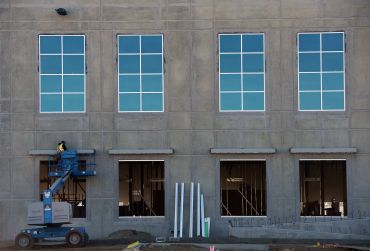New Breed of Creative Class Tenant Heads to Financial East Submarket
By Jotham Sederstrom October 23, 2012 7:15 am
reprintsThe area’s appeal as an office market is enhanced by an influx of residents that has tripled the Downtown population to almost 60,000 since 2001.
“A lot of the people who live down here want to walk to work,” said Brad Gerla, executive vice president at CBRE (CBRE). The transformation is most in evidence on weekends, when streets used to be empty. Now you might see couples pushing strollers down Wall Street alongside tourists heading for the South Street Seaport.
The residential market has fueled a stronger market for retail businesses such as the Capital Grille at 120 Broadway, which, Mr. Artusa said, is packed for lunch and dinner every night.
While the area lacks the access to Metro-North and the Long Island Rail Road that brings commuters to Midtown markets, Mr. Bellwood said a recent demographic study for a technology company considering a move showed that it was easier for most of its employees to get to buildings in lower Manhattan than to properties in Midtown South.
“Downtown is going to become one of the receiver markets for the overflow from Midtown South,” said Marcus Rayner, managing principal of Cresa, a real estate advisory firm that exclusively represents tenants. “The media has already established itself as a candidate for going Downtown with the lease to Condé Nast” at 1 World Trade Center, he said.
Landlords have “worked very hard on creating 24-hour community,” said Marc Shapses, executive managing director at Studley. The neighborhood offers water views from many of its buildings, and landlords offer generous build-outs to adapt spaces to the tenants’ needs. “It’s definitely the best value in Manhattan,” Mr. Shapses said.


